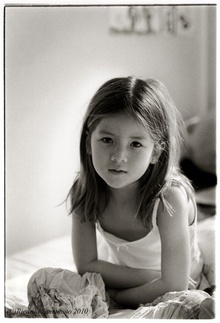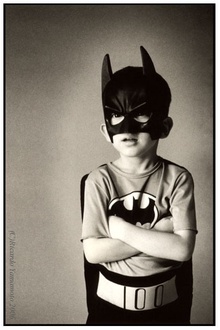In 1990 Japan revised its immigration law, allowing the Brazilians of Japanese descent to work in the country. Arriving in the new land, they went through a long period of adaptation and loneliness and in many cases ended up bringing their families and building their homes in Japan.
Their children came over time—and they, also pursuing their own dreams, followed in the footsteps of their parents and became workers. In this context, one would wonder how the reality of the immigrant influences the lives of these young people and children. How does Japanese society accept them, and how do they accept this society?
The official figures of 2010, when we commemorated 20 years of Brazilian emigration to Japan, state that out of every five Brazilians living in the country, one is a minor and represents the second generation of Brazilian immigrants. And looking at pictures of young Brazilian children in Japan as I did for years, I wonder how they would be living now. Have they already adapted to the country? Did they grow up and are they having a full and dignified life?
Out of curiosity, I decided to look for some children and teenagers and found that some had returned to Brazil, while others disappeared without a trace. But I managed to reconnect with some of them, and then I asked them to tell their stories. And here in this work I present them.
Scarlet Rigoli Fortunatti, 18 years (14 years old in the photo)
Lives in Toyohashi, Aichi Prefecture
I was born in São Paulo and came to Japan at four years old. My parents had come a little earlier to get a job and a house so everyone could be together. When I turned six years old, I entered a Japanese elementary school. It took me a while to be able to communicate and to get used to the food at school, but nevertheless, I always had trouble relating to the other children because to them I was different. As soon as I graduated from elementary school, I left school and tried to realize my dream, which was to be a model. The photo depicts me well during this time. But soon after I got pregnant and stopped everything in order to have my daughter.
After Maria Eduarda was born, I started working in a factory that makes printers. The first day was revolting, the time did not pass. I broke all my nails and had to swap high heels that I always loved for a pair of sneakers. I also thought I should try to go back to study again, but I do the night shift and I am very tired.
Today I know I do not want to live in Brazil; I got used to and want to stay in Japan even though I shall forever feel a foreigner. I grew up here, and also I was not born here only because God did not want it. Factory work also does not bother me much, but on weekends I make it a point to hide my sneakers.
Hayanna Iguchi Murakawa, 10 years (5 years old in the photo)
Lives in Bali, Indonesia
I am a Brazilian Nikkei who was not born in Japan or Brazil. It is that my parents met while working in Japan, but one day they went to Bali and enjoyed it so much that they decided to try living on the island. It was where I was born. But when I was younger, our family had to go again for some time in Japan in order to save money.
We lived in Hamamatsu and while my parents worked, I was in school. They left me in a “hoikuen” (Japanese nursery), where I learned the language a bit and I hung out with kids who were different from me. Then I went to a Brazilian school where I met Brazilian children like me. I had already gone to Brazil and loved it! I had sugar cane juice and ate all kinds of pastels. (deep fried pastry dough with a variety of fillings)
Now we are again living in Bali and here I spend more time with my mother and I can play more. I study at an international school and there my friends, like me, are from many countries. I like the schools that I attended in Japan, but I prefer it this way—when normal is different.
Maúcha Shiwa Salles, 21 years (14 years old in the photo)
Lives in Hamamatsu, Shizuoka Prefecture
I remember the parties of Brazil, a large park where I would play and the school that I liked so much in Itapetininga (São Paulo). I came to Japan with my family at seven years old. We arrived at a time when it was really cold and I soon entered a Japanese school where I stayed for three years.
At first I did not understand anything and I felt very much alone. I could not get used to the food. Once I had to “cheat” off a boy’s test because I did not know what to write on the test. Then I got used to it and made friends. But after three years I decided to move to a Brazilian school, but even there I could not feel at ease. It was at that time when I took the photo. Soon after, I decided to quit school in order to be able to work.
My first day was in a factory that made parts for Toyota cars. When I got home, exhausted, I lied to my mother that the day had been great—I did not want her to worry about me. Many of my classmates did the same, but I regret not having continued my studies. Today my only certainty is that I want to return to Brazil. I can not explain why. I spent most of my life here; I do not remember my country well, but just the same I miss Brazil.
Rye Inoue, 16 years (11 years old in the photo)
Lives in Hamamatsu, Shizuoka Prefecture
I was born in Japan, in the city of Hamamatsu. At 3 years old, my parents took me to Brazil—they had decided that I would have to stay there with my grandmother, just so they could save money in Japan and still support us both. There I went to school and made many friends. Then my parents realized it would take a lot longer for them to return to Brazil and decided to bring me back to Japan. The picture was taken when I had just arrived.
Soon I entered a Brazilian school, but I did not adapt. So I tried a Japanese school. At the beginning I suffered for not understanding anything, and on weekends I stayed at home because I was afraid to go out. But over time I got used to it and some boys even bought a dictionary to try to talk to me!
I am not sure, but in future I want to go to college and maybe even live outside of Japan because I think that I could no longer live in Brazil. I spent my teenage years here; I am in second year of high school and I enjoy going to school. I do everything with the other students and what I do not know, I ask. So I hope that adults do not look at foreign children with indifference just because they have another way of talking.
Douglas Takahashi Oliveira, 9 years (5 years old in the picture)
Lives in Hamamatsu, Shizuoka Prefecture
I was born in Brazil in the city of Primavera do Leste, Mato Grosso. I remember that I lived near my grandmother and had a kitten, named Sofia. I was playing tag with the class and my best friend’s name was Lázaro. I came to Hamamatsu with my mother when I was five years old. Arriving here, the hardest thing for me was to learn Japanese. I entered a Japanese school and in the beginning I did not understand anything; I was in the classroom just listening to this strange language, waiting for my mom to come get me. Gradually I began to understand and things got more awesome.
Now, in school my best friend is Yuji, and there everyone walks together—Brazilians and Japanese. My mom likes it here and wants to stay a long time, and I also prefer Japan. At school we also play soccer too, but despite being Brazilian, I am not very good. I am so-so. And I still do not know what I want to be when I grow up.
© 2010 Ricardo Yamamoto








